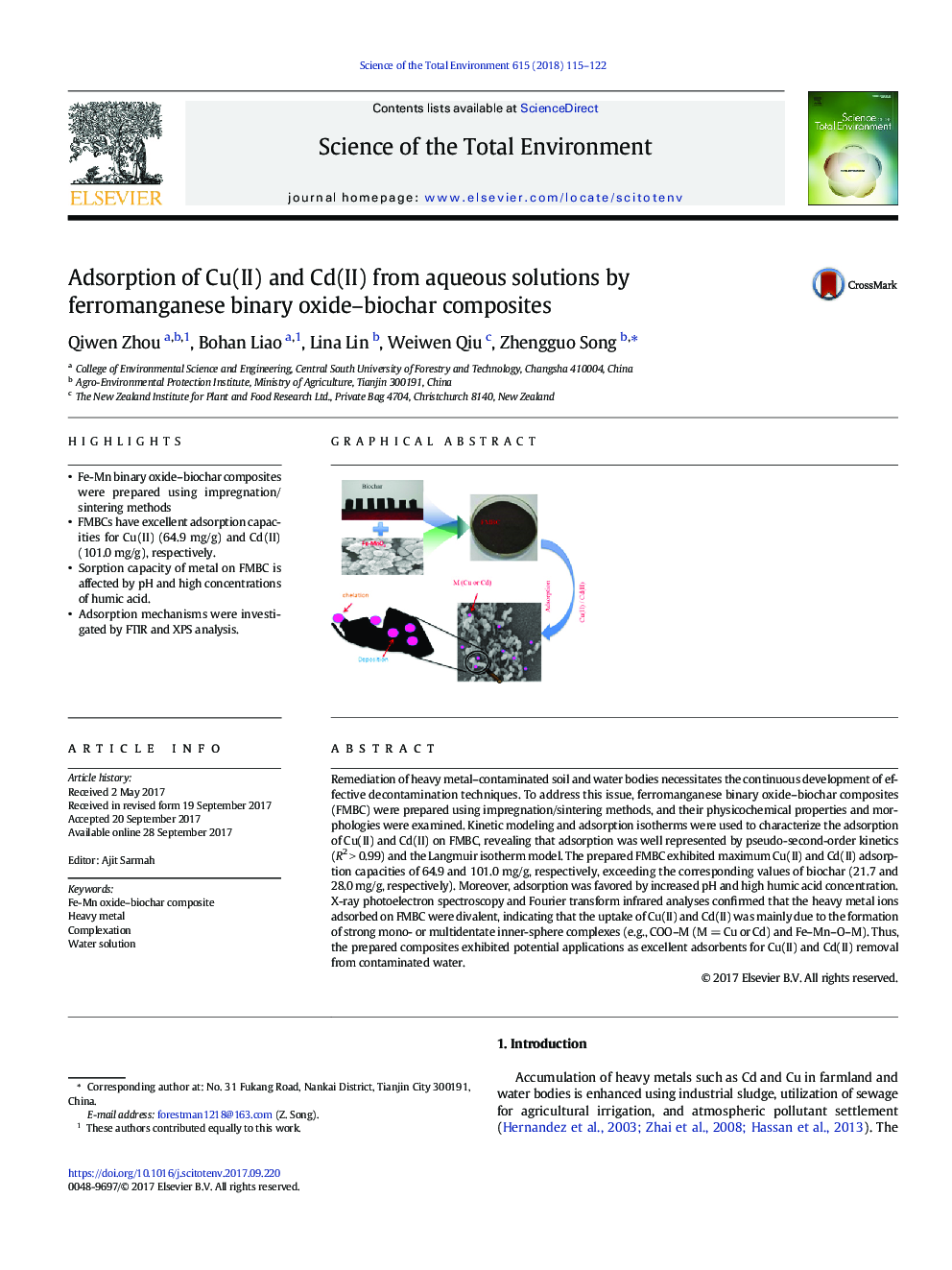| Article ID | Journal | Published Year | Pages | File Type |
|---|---|---|---|---|
| 5749765 | Science of The Total Environment | 2018 | 8 Pages |
â¢Fe-Mn binary oxide-biochar composites were prepared using impregnation/sintering methodsâ¢FMBCs have excellent adsorption capacities for Cu(II) (64.9 mg/g) and Cd(II) (101.0 mg/g), respectively.â¢Sorption capacity of metal on FMBC is affected by pH and high concentrations of humic acid.â¢Adsorption mechanisms were investigated by FTIR and XPS analysis.
Remediation of heavy metal-contaminated soil and water bodies necessitates the continuous development of effective decontamination techniques. To address this issue, ferromanganese binary oxide-biochar composites (FMBC) were prepared using impregnation/sintering methods, and their physicochemical properties and morphologies were examined. Kinetic modeling and adsorption isotherms were used to characterize the adsorption of Cu(II) and Cd(II) on FMBC, revealing that adsorption was well represented by pseudo-second-order kinetics (R2Â >Â 0.99) and the Langmuir isotherm model. The prepared FMBC exhibited maximum Cu(II) and Cd(II) adsorption capacities of 64.9 and 101.0Â mg/g, respectively, exceeding the corresponding values of biochar (21.7 and 28.0Â mg/g, respectively). Moreover, adsorption was favored by increased pH and high humic acid concentration. X-ray photoelectron spectroscopy and Fourier transform infrared analyses confirmed that the heavy metal ions adsorbed on FMBC were divalent, indicating that the uptake of Cu(II) and Cd(II) was mainly due to the formation of strong mono- or multidentate inner-sphere complexes (e.g., COO-M (MÂ =Â Cu or Cd) and Fe-Mn-O-M). Thus, the prepared composites exhibited potential applications as excellent adsorbents for Cu(II) and Cd(II) removal from contaminated water.
Graphical abstractDownload high-res image (118KB)Download full-size image
